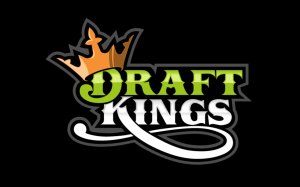It’s an intricate road post-insolvency; from delicate asset tracing and debt recovery to tying up lose ends, lawyers have a hard time keeping up with the details. For Tomislav Šunjka, Founder and Principal of Serbia-based ŠunjkaLaw, these are the challenges that are pursued. Below Tomislav catches up with Lawyer Monthly to discuss the step by step processes.
What alternative options do you present when clients are looking for ways of securing claims during settlements?
Settlements are basically agreements and as such they represent an instrument in securing a legal position in the event of dispute. Lawyers tend to make standard settlements, with basic approaches, where they deal with protection of their clients’ rights through settlement declarations, with termination as a highest level of protection. In business relations, the last thing that a client wants is the termination of settlements, since all of business agreements, including settlements, are in fact made with the intention of fulfilment. In this sense, maximum effort should be made to define legal mechanisms and instruments in the settlement, which will lead to execution and fulfilment. In addition to real securities, such as bank guarantees, mortgage right, pledge right, charges, conclusion of the settlement in proper form has proved to be the most effective in practice. We advise our clients to conclude settlements with their debtors in the form of statement in which they acknowledge the debt, where settlement is concluded before public notary or judge in pre-litigation or enforcement procedure. In such settlements, two things are the most important: the exact and particular plan of payment of the debt, and agreeing that if the debtor fails to pay just one instalment, the entire debt becomes due. In this way, the settlement becomes an executive document, with the legal force of a court decision and it completely surpasses litigation.
In your opinion, what is the most difficult aspect of insolvency procedures, and how do you overcome this?
The most difficult aspect of insolvency procedures is the slowness of the legal procedure and its mechanisms. Assets quickly change places, forms, owners, and it is very difficult to protect the rights of the creditor in the meantime, since the chances for asset recovery is reduced or ultimately non-existent. We overcome this by using civil asset recovery mechanisms and direct financing of legal activities of asset tracing and recovery by the insolvency creditors. Most commonly, this means obtaining freezing orders for said assets, to secure collecting the claim. In the next step, we inform the insolvency judge and the insolvency administrator that such claim is secured, after which by direct standing they execute collection through said asset.
When creating a strategy for a client’s claim, what are the first three things you consider, and why?
For example, the legal mechanism of asset recovery of legitimate deposits of a bank client in the international liquidation procedure is very interesting. We resolve such situations by firstly investigating the correspondent and non-resident accounts of a bank in liquidation in third countries and jurisdictions. We then negotiate with the central bank of that country to open special escrow accounts as a form of securing a set-off settlement. Finally, we conclude a set off settlement between our client who is a client of a bank with a legitimate deposit and assets at the bank's accounts in liquidation, with the assets of the bank itself on correspondent and non-resident accounts. These procedures always include investor or litigation funder who buy and finance the collection of such claims in liquidation. Buying of claims is also performed through the aforementioned escrow account, by depositing fund to the account. The funds remain on the escrow account up until the moment of notification registration before the deposit agency which handles the liquidation. At the moment of registration, the client receives the freed funds from the escrow account, while the investor or litigation funder continues to be the bank creditor, set-off the claim with funds on correspondent or non-resident accounts of the bank or collecting it through litigation.
Tomislav ŠunjkaŠunjkaLaw
Sremska 4, 1st floor, 21000 Novi Sad, Vojvodina, Serbia
Tel: +381214721788
tomislav.sunjka@sunjkalawoffice.com
www.sunjkalawoffice.com
I am named regional representative of the IBA Ant-corruption Committee for Europe, a member of the Asset tracing Subcommittee and also an active member of the ICC FraudNet, a network of legal professionals dealing with asset tracing and recovery. Our lawyers are equipped with skills, capacity, knowledge, dedication and discretion to resolve the most difficult and most complex legal issues, with elements of cross border transactions, several jurisdictions, multitask demands and very delicate clients and opposite parties.




















